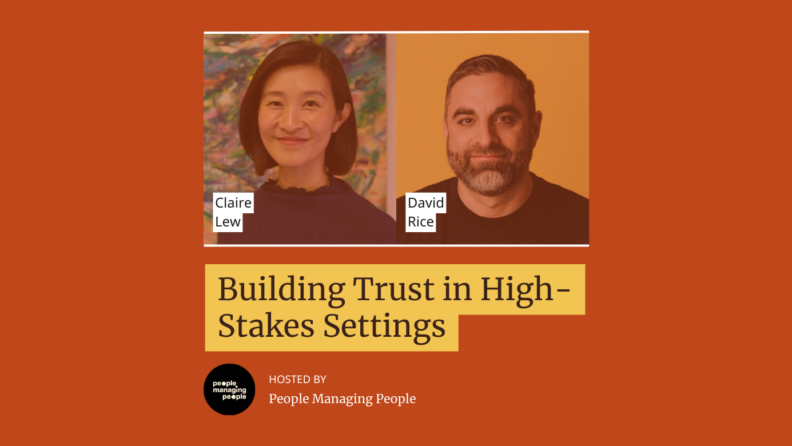Building Trust in High-Stakes Settings

The level of trust in your team has been shaky. Between layoffs and return-to-office initiatives, the desire for more growth and efficiency in your organization – you know your team needs a greater level of trust to perform at its highest level. But how, exactly?
In under an hour, we talked about how trust in leadership relies on two pillars: affective trust (emotional connection) and cognitive trust (competence and reliability).
Building trust starts with affective rapport and transitions to demonstrating reliability through consistent actions. In times of change, leaders can foster stability by offering predictability, clear communication, and empowering their teams while showing genuine care.
As an added bonus, People Managing People readers have access to a 30% off discount to Claire’s leadership training platform, Canopy. This platform is where leaders go to feel supported and grow. It provides thoughtful, lightweight leadership learning for leaders in fast-moving work environments.
Access your 30% discount here!
Lastly, here are all of the the resources and links referred to during the session:
- Denise Rousseau’s Trust Definition Paper
- Stephen Covey’s The Speed of Trust: Explores trust as a business advantage.
- Amy Cuddy’s Research on Warmth and Competence: Studies that outline how these traits underpin trustworthiness.
- Daniel McAllister’s Framework: Differentiation between affective and cognitive trust.
- Canopy Leadership Resources:
Free Community Content
Join the community to access this content. Already have an account? Use the link below to login.
Have an account? Login
